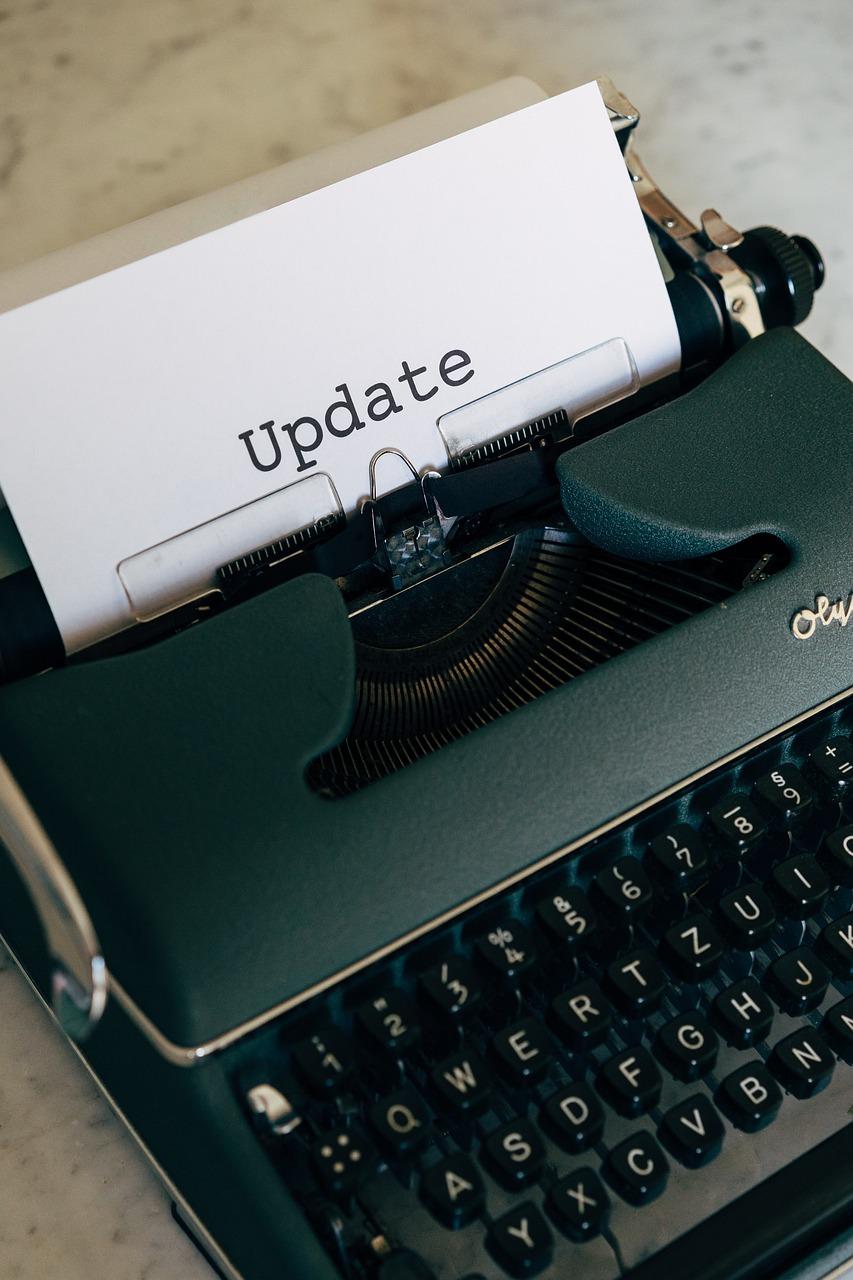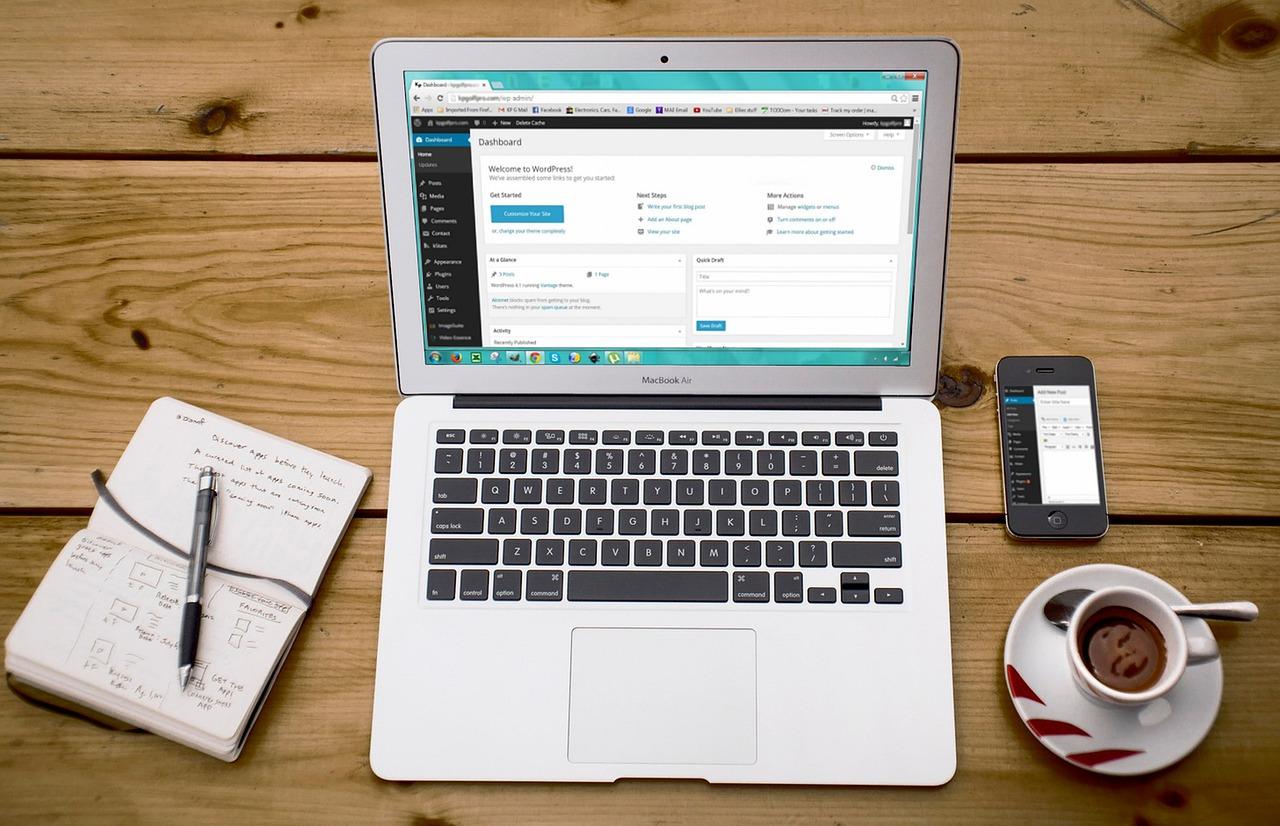Micro interactions are the unsung heroes of user experience design. These small yet powerful tweaks—like subtle animations and thoughtful feedback—can transform ordinary tasks into delightful moments, engaging users and fostering loyalty. Master them to elevate your UX!
Mastering Micro Interactions: The Small UX Tweaks That Can Make a Big Difference
In the fast-paced digital landscape, where attention spans are shorter than ever, the smallest details often carry the heaviest weight. Micro interactions—those subtle animations, tiny feedback loops, and nuanced design elements—play a pivotal role in shaping user experiences, yet they often go unnoticed. These seemingly insignificant moments possess the power to transform an ordinary interaction into a memorable one, enhancing usability and forging deeper connections between users and products. Imagine the joy of an effortless transition, the satisfaction of a perfectly timed notification, or the delight of a whimsical loading animation. Each micro interaction is a chance to make a lasting impression and elevate user engagement to new heights. In this article, we will explore the art of mastering micro interactions, revealing how these small yet impactful UX tweaks can create ripples of positive change in your digital landscape. Join us on this journey to discover how harnessing the potential of micro interactions can not only enhance user satisfaction but also set your design apart in a crowded market. Let’s dive in and unlock the transformative power of the tiny details that make a big difference!
Mastering the Art of Micro Interactions for a Seamless User Experience
Micro interactions are the subtle yet powerful elements of design that create delightful moments for users. Often overlooked, these small details play a vital role in enhancing usability and fostering emotional connections. By mastering micro interactions, designers can significantly elevate the overall user experience.
Consider the following aspects when integrating micro interactions into your designs:
- Feedback: Every action taken by a user should have a corresponding reaction. Whether it’s a button click or a form submission, instantaneous feedback reassures users that their actions have been acknowledged.
- Animation: Smooth transitions and animations can guide users through interactions, making the experience feel natural and intuitive. For example, a subtle bounce effect on a button hover can enhance engagement without overwhelming the user.
- Timing: The timing of micro interactions is crucial. A well-timed animation can draw attention to important elements without causing frustration. Ensure that interactions are swift yet noticeable.
To illustrate how micro interactions can transform a user experience, consider the following table highlighting common examples:
| Micro Interaction | Effect |
|---|---|
| Loading indicators | Keep users informed and reduce anxiety during wait times. |
| Form validation messages | Provide immediate feedback, enhancing user confidence in their inputs. |
| Toggle switches | Offer a clear visual cue regarding options or settings, increasing user satisfaction. |
Incorporating these elements requires a thoughtful approach. By focusing on clarity and purpose, designers can create interactions that not only serve functional needs but also evoke positive emotions. Aim for simplicity; every micro interaction should be meaningful and serve the user’s context.
Embrace the power of storytelling through micro interactions. Each detail, no matter how small, contributes to the narrative of your product. As users engage with these interactions, they are not just completing tasks—they are experiencing a story that unfolds with every click, swipe, and tap. By investing in these seemingly minor tweaks, you can craft a seamless and memorable journey that resonates with users long after they leave your site.

Understanding the Power of Small Details in UX Design
In the realm of user experience (UX) design, the smallest details often deliver the most profound impacts. Micro interactions—those subtle animations and feedback moments—can transform a mundane task into an engaging experience, fostering a deeper connection between the user and the product. These carefully crafted touches not only enhance usability but also evoke emotional responses that keep users coming back.
Consider the following aspects of micro interactions:
- Feedback: Immediate responses when users perform actions (like clicking a button) can affirm their choices, making them feel in control.
- Guidance: Subtle cues, such as animated tooltips or progress indicators, help users navigate your interface more intuitively.
- Delight: Small surprises, like a playful animation when a task is completed, can elevate the overall user experience and create memorable moments.
To illustrate the value of these small details, consider a typical form submission process. Integrating a micro interaction can turn a static experience into one that feels dynamic. For example, instead of a basic loading icon, a progress animation that fills up as the form is submitted can keep users engaged and informed about what’s happening.
| Micro Interaction Example | Impact on UX |
|---|---|
| Button hover effect | Signals interactivity and encourages clicks. |
| Checkmark on form completion | Provides confirmation and satisfaction. |
| Animated transitions | Makes navigation feel smoother and more fluid. |
When designing these interactions, it’s crucial to strike the right balance. Overly complex or excessive animations can frustrate users instead of delighting them. The key lies in simplicity and purpose. Every micro interaction should have a reason for being there, enhancing the user’s journey without overwhelming them.
Incorporating feedback loops through these small elements can significantly improve user retention. For instance, implementing sound effects or visual changes when a user reaches a milestone in a task can reinforce positive behavior and encourage continued engagement. These are the moments that can inspire loyalty and advocacy for your brand.
Ultimately, understanding and mastering the nuances of micro interactions can lead to a more intuitive, enjoyable user experience. By paying attention to the small details, you not only create functionality but also foster an emotional connection that resonates with users long after their initial visit. Embrace the power of these subtle cues, and watch your design transform into an experience that users cherish.
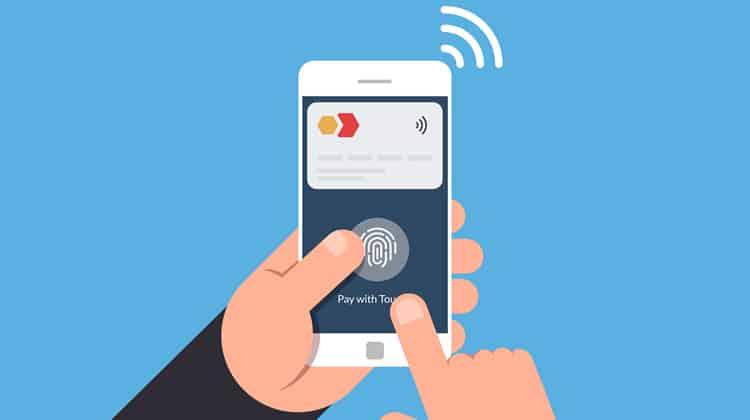
Creating Emotional Connections Through Thoughtful Micro Interactions
In a world where every touchpoint counts, the beauty of micro interactions lies in their ability to forge deep emotional connections between users and brands. These small yet powerful design elements can evoke feelings, cultivate loyalty, and ultimately enhance user experience. When crafted thoughtfully, micro interactions can transform routine actions into delightful moments, leading to memorable user journeys.
Think about the subtle animations that greet you when you hover over a button. They’re not just decorative; they convey a sense of responsiveness and engagement. This simple feedback reassures users that their actions are recognized, fostering a feeling of control and satisfaction. When users feel that their inputs matter, they are more likely to develop a bond with the interface, making them return time and again.
Consider the emotional weight of a well-designed notification. A gentle nudge that informs users of an update or milestone can evoke excitement and anticipation. On the other hand, a thoughtfully timed reminder can offer support, guiding users along their journey without overwhelming them. By personalizing these notifications to reflect user preferences or past behaviors, designers can create a conversation that feels tailored and significant.
Visual cues are also essential in nurturing emotional ties. The choice of colors, typography, and icons can elicit specific feelings. For instance, a warm color palette can evoke comfort, while playful icons can spark joy. By aligning visual elements with user expectations and emotional states, designers can create a harmonious experience that resonates on a deeper level.
| Micro Interaction Type | Emotional Impact | Design Element |
|---|---|---|
| Button Hover Effects | Engagement | Subtle animations |
| Personalized Notifications | Excitement | Tailored messages |
| Visual Cues | Comfort | Color and typography |
But the magic of micro interactions goes beyond aesthetics; they can also serve functional purposes. For example, a loading indicator can alleviate frustration during wait times, transforming a potentially negative experience into one of patience and anticipation. By integrating these thoughtful features, users feel more connected to the product, perceiving it as an ally rather than just a tool.
Ultimately, every micro interaction carries the potential to tell a story. They encapsulate the brand’s voice and personality, making the digital experience more relatable. When users perceive authenticity in these interactions, it fosters trust and loyalty. As designers, it’s our responsibility to harness the power of these small moments, crafting experiences that not only serve functional needs but also touch the hearts of our users.
Enhancing User Engagement with Subtle Animations
In the realm of user experience design, animations often get relegated to the background, overshadowed by more substantial design elements. However, subtle animations have the potential to transform the way users interact with your website or application, adding a layer of dynamism that can significantly enhance user engagement. By incorporating thoughtful animations, you can create a more immersive experience that not only captivates users but also subtly guides them through their journey.
Consider these key benefits of using subtle animations:
- Improved Usability: Animations can serve as visual cues, helping users understand the functionality of elements. For instance, a button that gently pulses can draw attention, indicating that it is clickable.
- Enhanced Feedback: When users perform actions, animations can provide instant feedback. A smooth transition when submitting a form can reassure users that their action has been registered, reducing uncertainty.
- Increased Retention: Engaging animations can keep users on your page longer. A visually appealing design that incorporates smooth transitions can create a more enjoyable experience, encouraging users to explore further.
To take full advantage of animations, it’s essential to keep them subtle and purposeful. Overly flashy or excessive animations can overwhelm users, detracting from the primary content. Instead, focus on integrating animations that complement the overall design and enhance the user experience. For example, a simple fade-in effect for images can create a polished look without diverting attention from the message you want to convey.
The following table illustrates some effective subtle animation techniques and their potential impacts:
| Animation Technique | Impact |
|---|---|
| Hover Effects | Encourages interaction and signals clickable elements. |
| Loading Indicators | Reassures users that content is being processed. |
| Scroll Animations | Grabs attention and maintains engagement as users navigate. |
| Micro-Transitions | Enhances the flow, making the interface feel cohesive. |
As you design your user experiences, remember that the goal is to create a seamless journey. By integrating subtle animations, you can guide users intuitively, making interactions feel more organic and less mechanical. This approach not only enriches the user’s experience but also fosters a deeper connection between the user and the brand.
The Importance of Feedback: How Micro Interactions Guide Users
In the world of user experience design, the significance of feedback cannot be overstated. Micro interactions—the tiny, subtle elements that respond to user actions—play a crucial role in guiding users through their journey. These interactions provide immediate feedback, which not only enhances usability but also fosters a sense of control and satisfaction. When users engage with a product, they crave acknowledgment of their actions, and that’s where feedback shines.
Consider the following aspects where feedback through micro interactions can significantly enhance the user experience:
- Confirmation: When users submit a form, a simple confirmation message or visual cue assures them that their action was successful.
- Error Indication: Highlighting errors in real-time allows users to correct mistakes instantly, reducing frustration and enhancing engagement.
- Progress Indicators: Visual progress bars or loading animations keep users informed about ongoing processes, preventing feelings of uncertainty.
Feedback is not just about informing users; it’s also about building an emotional connection. When users receive a warm response to their actions, they feel valued. This emotional resonance can lead to increased loyalty and a stronger bond with your brand. For instance, a subtle animation when adding an item to the cart can evoke a sense of achievement, reinforcing positive behavior.
Moreover, designing effective feedback mechanisms requires an understanding of user psychology. Users are more likely to engage with interfaces that react to their inputs in meaningful ways. Here’s how you can implement effective micro interactions:
| Micro Interaction | Purpose | Best Practices |
|---|---|---|
| Hover Effects | Indicate clickable elements | Use subtle color changes |
| Button Press Animation | Provide tactile feedback | Ensure smooth transitions |
| Success and Error Messages | Guide users on actions | Be clear and concise |
Ultimately, micro interactions serve as the bridges between user intentions and system responses. They guide users, empower them, and enhance overall satisfaction. By prioritizing these small yet impactful interactions, you can create a user experience that feels intuitive, engaging, and memorable. Investing in thoughtful feedback through micro interactions is not just an enhancement; it’s a necessity for crafting modern digital experiences that resonate with users.

Designing for Delight: The Role of Surprise in Micro Interactions
In the world of user experience, it’s often the smallest details that create lasting impressions. When designed thoughtfully, micro interactions can evoke feelings of joy and surprise, elevating everyday tasks into delightful moments. Imagine a simple notification that not only informs you but also brings a smile through its playful animation. These tiny touches transform mundane interactions into memorable experiences, fostering a deeper connection between users and products.
To harness the power of surprise, consider incorporating elements that catch users off guard in a positive way. Here are a few strategies:
- Unexpected Rewards: Gamify interactions by offering small rewards after completing a predefined task. A simple confetti animation can amplify the satisfaction of achieving a goal.
- Delightful Feedback: Use engaging animations or sound cues to provide feedback on user actions. This could be as simple as a delightful sound play when a task is completed or a subtle animation that brings a button to life.
- Personalized Greetings: Tailor micro interactions based on user behavior or preferences. For example, a unique greeting that adapts based on the time of day can make users feel recognized and valued.
Another way to implement surprise is through transitions. Smooth, unexpected transitions can transform how users perceive time spent on your platform. A seamless sliding effect when navigating between sections can create anticipation, making users eager to explore more. Adding a touch of whimsy in these transitions can turn a simple action into a delightful journey.
Furthermore, consider the emotional response you want to evoke at different stages of interaction. Use color, typography, and movement to guide users through their experience while injecting moments of surprise. For instance, a playful color shift or a subtle bounce can be just the right touch to keep users engaged and excited.
Ultimately, the key to designing for delight lies in empathy. Understand your users’ needs, desires, and frustrations. By anticipating their reactions, you can create micro interactions that not only meet their expectations but exceed them. Surprise is not just about being flashy; it’s about creating a genuine connection that resonates on a deeper level.
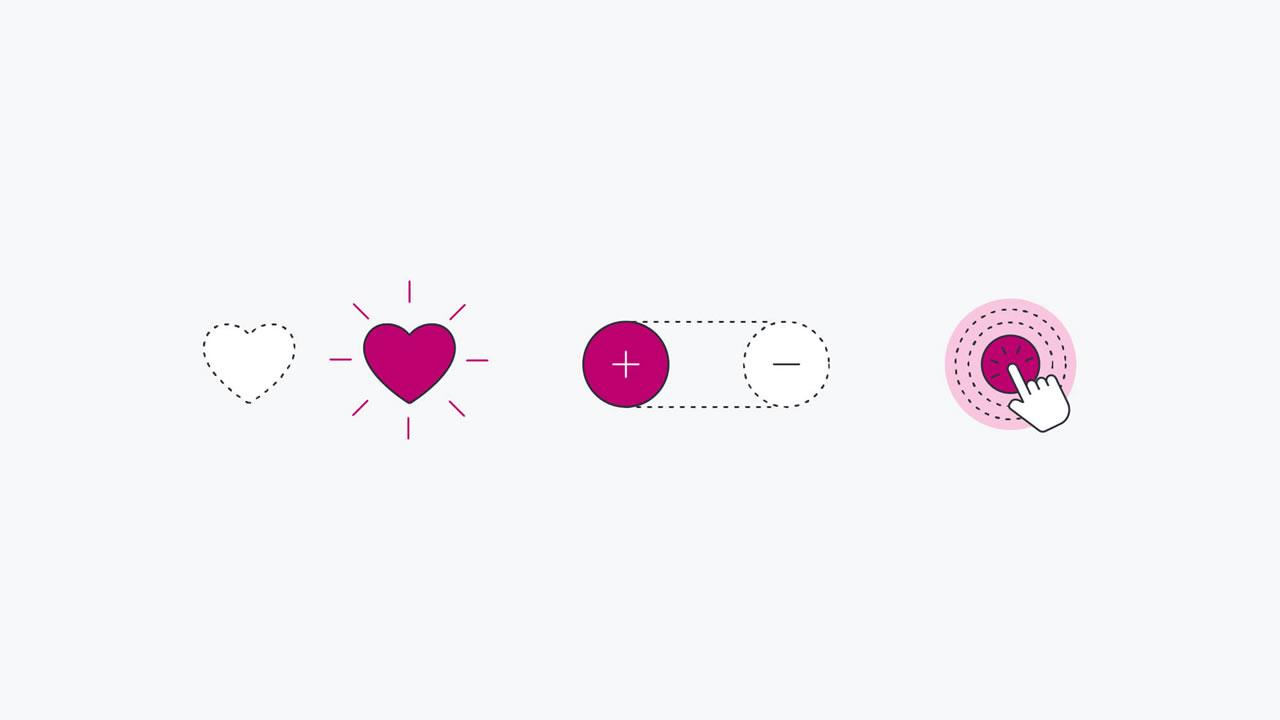
Best Practices for Implementing Effective Micro Interactions
Micro interactions are the unsung heroes of user experience design, subtly guiding users without overwhelming them. To harness their power effectively, consider the following best practices:
- Prioritize User Needs: Begin by understanding the specific needs and pain points of your users. Tailor micro interactions to address these directly, ensuring that each interaction serves a purpose.
- Keep It Simple: Avoid clutter in your designs. Each micro interaction should be intuitive and straightforward, allowing users to grasp its function quickly. Remember, simplicity enhances usability.
- Provide Feedback: Users crave feedback. Whether it’s a subtle animation or a sound cue, ensure that micro interactions communicate changes effectively, confirming that their actions have been acknowledged.
- Be Consistent: Consistency in design creates familiarity. Use similar patterns and behaviors across your application, so users can predict outcomes and feel more comfortable navigating your interface.
Integrating these interactions should be a harmonious process. Consider these additional elements:
- Embrace Delight: Infuse personality into your micro interactions. Small touches, like playful animations or thoughtful confirmations, can create memorable experiences that delight users.
- Test and Iterate: Continuous improvement is key. Regular user testing can unveil insights about how your micro interactions are received. Use this feedback to refine and enhance them over time.
- Leverage Context: Context matters. Tailor micro interactions to match the user’s task and environment, ensuring they feel relevant and timely.
| Aspect | Considerations |
|---|---|
| User Engagement | Reflect user behavior and needs. |
| Design Clarity | Ensure visibility and ease of understanding. |
| Emotional Appeal | Create positive emotional responses. |
| Accessibility | Make interactions usable for everyone. |
By focusing on these strategies, you can craft micro interactions that elevate the user experience and foster deeper connections with your users. Crafting the perfect micro interaction is less about complexity and more about creating a seamless, enjoyable journey through your platform.
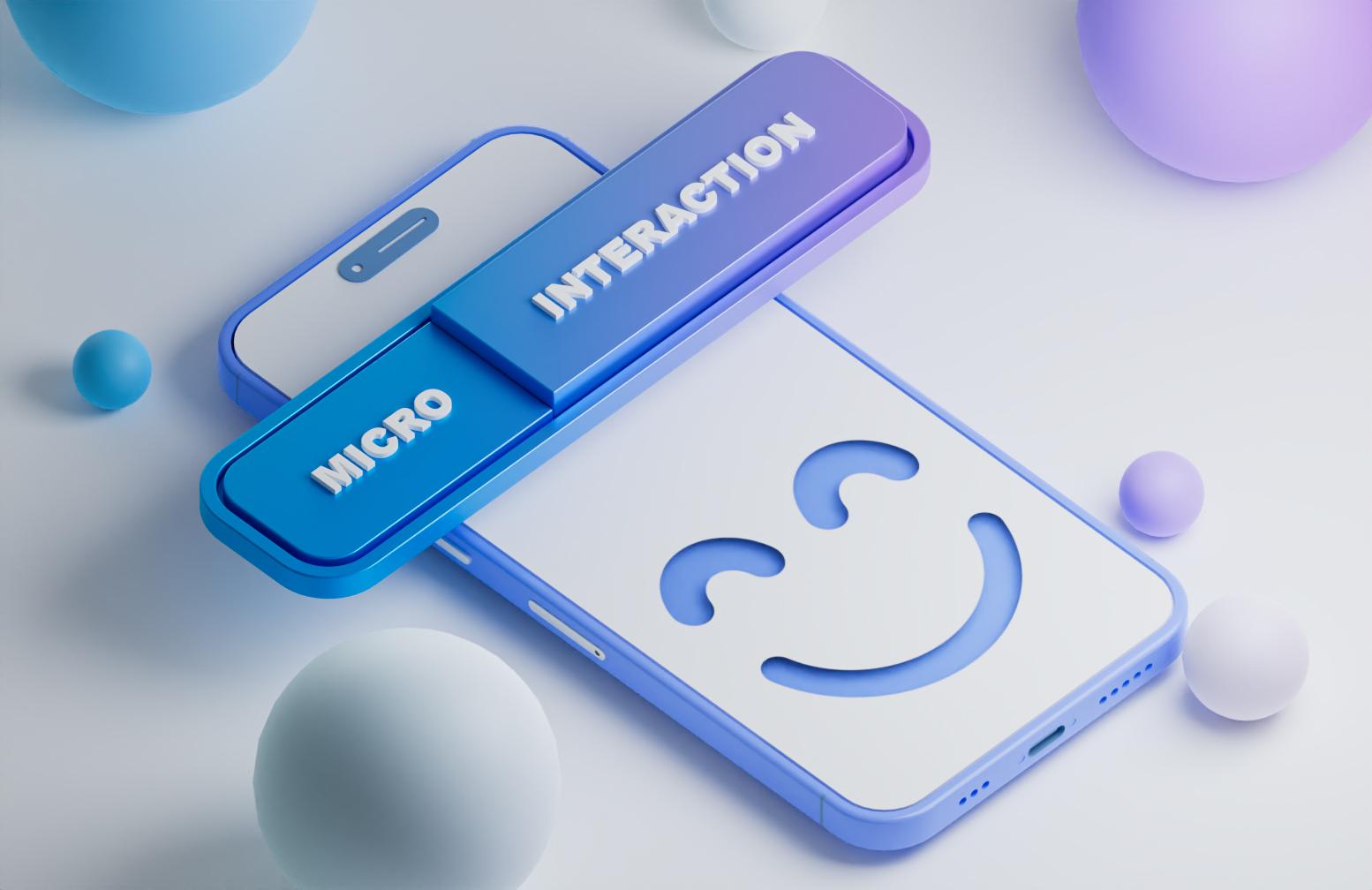
Elevating Accessibility: Making Micro Interactions Inclusive
Micro interactions are the tiny moments that can either enhance or disrupt the user experience, especially for those with disabilities. By prioritizing accessibility in these small, yet impactful, design elements, we can create a more inclusive digital landscape. Here’s how to ensure that every user can engage meaningfully with your product:
- Color Contrast: Ensure that the colors used in micro interactions provide sufficient contrast against their backgrounds. This is crucial for users with visual impairments.
- Keyboard Navigation: Design interactions that are fully navigable using keyboard shortcuts. This benefits users who cannot use a mouse and rely on assistive technologies.
- Screen Reader Compatibility: Add ARIA labels to micro interactions so that screen readers can convey the purpose and status of interactive elements.
- Feedback Mechanisms: Provide clear, audible, and visual feedback for actions taken within micro interactions. This assures users that their input has been recognized.
Incorporating these elements is not just about compliance; it’s about fostering an environment where all users feel valued. Consider the following best practices:
| Practice | Benefit |
|---|---|
| Use of Alt Text | Enhances understanding for screen reader users. |
| Subtle Animations | Provide visual cues without overwhelming sensory sensitivities. |
| Consistent Iconography | Helps users quickly identify functions, reducing cognitive load. |
By integrating these practices, we shift the narrative from merely designing for the majority to designing for everyone. This approach not only increases usability but also broadens your audience reach, creating a more loyal user base. Remember, each micro interaction is a chance to express inclusivity and empathy.
As you refine your design strategy, seek feedback from users with diverse abilities. Their insights can guide meaningful changes that resonate beyond aesthetics. Embrace the challenge of making micro interactions accessible, and you will not just enhance user experience but also cultivate a community that celebrates diversity.

Analyzing User Behavior to Optimize Micro Interactions
Understanding user behavior is essential for optimizing micro interactions, the small yet powerful elements of user experience design that can significantly influence how users feel about your product. To take full advantage of these interactions, it’s important to analyze user engagement patterns, preferences, and pain points. By gathering data on how users interact with your application, you can make informed decisions that enhance their overall experience.
One effective way to analyze user behavior is through heatmaps. These visual representations of user interactions provide insights into where users click, scroll, and spend the most time. By identifying hotspots, designers can pinpoint which micro interactions are engaging and which may need refinement. For instance, if a button consistently receives clicks, consider enhancing its visibility or adding a subtle animation to draw more attention.
Another powerful tool is user session recordings. Watching real users navigate your application can unveil unexpected challenges and frustrations. You may discover that users struggle with a particular interaction, perhaps due to unclear instructions or insufficient feedback. By addressing these issues, you can streamline the user experience and optimize the effectiveness of micro interactions.
Furthermore, consider implementing A/B testing to evaluate different designs for micro interactions. By offering variations to different user groups, you can assess which version performs better regarding user engagement and satisfaction. For example, you might test two different loading animations to see which one creates a more positive user perception while waiting for content to load.
| Micro Interaction | Analysis Method | Objective |
|---|---|---|
| Button Clicks | Heatmaps | Enhance visibility |
| Form Submissions | User Session Recordings | Identify friction points |
| Loading Animations | A/B Testing | Optimize user perception |
Lastly, incorporating user feedback directly can provide invaluable insights. Create opportunities for users to share their experiences, whether through surveys, feedback forms, or direct interviews. Listen closely to what they have to say, as their insights can illuminate areas for improvement that might not be evident through data alone. This user-centric approach ensures that your micro interactions resonate with the target audience, making them feel acknowledged and appreciated.
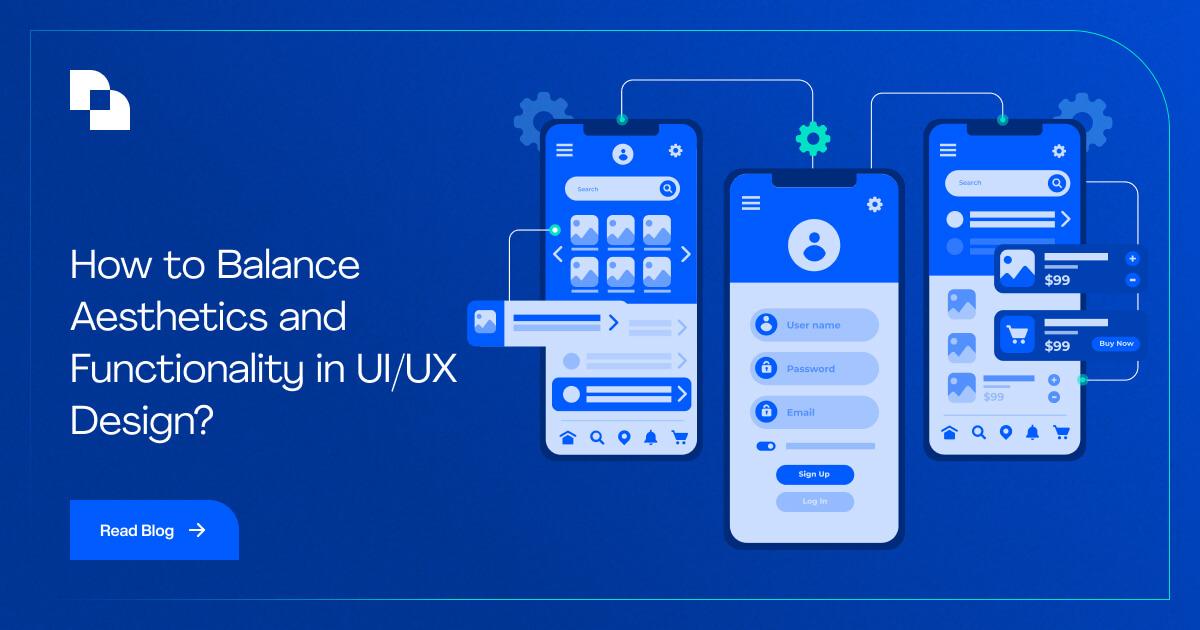
Balancing Aesthetics and Functionality in UX Tweaks
When it comes to user experience (UX) design, the delicate dance between aesthetics and functionality is crucial. Micro interactions serve as the subtle yet powerful tools that enhance this balance. These small design elements, whether they involve a button’s hover effect or a loading animation, can significantly influence a user’s perception and usability of a product.
To achieve the perfect blend of style and utility, consider the following aspects:
- Clarity in Design: Every micro interaction should communicate its purpose clearly. For instance, a loading spinner should be visually appealing, yet unmistakably indicate that the user needs to wait.
- Feedback Mechanism: Provide immediate feedback to user actions. A subtle color change when a button is clicked or a gentle shake for an incorrect input can enhance user satisfaction.
- Consistency: Maintain a uniform design language across all micro interactions. This consistency helps users intuitively understand how to navigate your interface.
- Contextual Relevance: Ensure that interactions are appropriate for their context. For example, a playful animation might be suitable for a children’s app, while a more professional tone may be required for a corporate website.
Consider the following table, which illustrates how different micro interactions can impact UX:
| Micro Interaction | Purpose | Impact |
|---|---|---|
| Button Hover Effect | Indicates interactivity | Increases click-through rate |
| Notification Toast | Alerts users of actions | Enhances task completion awareness |
| Progress Indicator | Shows status of a task | Reduces anxiety during waiting times |
Ultimately, the essence of effective UX design lies in understanding that beauty should never come at the cost of functionality. Users are drawn to visually appealing interfaces, but they will remain loyal to those that deliver seamless experiences. By thoughtfully incorporating micro interactions, designers can create environments that are not only stunning but also intuitive and user-friendly.
always remember that every small detail matters. The most successful designs marry aesthetics with usability, leading to a more engaging and fulfilling user journey. By mastering the art of micro interactions, you can elevate your UX strategy to new heights, ensuring that every user feels valued and understood.

Crafting Consistency: Building a Cohesive Experience Across Touchpoints
In today’s digital landscape, users interact with brands across multiple platforms and devices. Every touchpoint represents an opportunity to engage, inform, and inspire your audience. Crafting a cohesive user experience is not just about aesthetics; it’s about making every interaction feel seamless and intuitive. This is where micro interactions come into play.
Micro interactions are the small, subtle elements that enhance the user experience. They are the tiny details that make a big impact, often overlooked but vital for a holistic approach to design. Consider the following aspects of micro interactions:
- Feedback: Provide immediate responses to user actions, like a subtle animation when a form is submitted.
- Guidance: Use tooltips or hints to assist users without overwhelming them with information.
- Engagement: Incorporate playful elements, such as a fun loading animation, to keep users entertained during wait times.
To ensure consistency across all touchpoints, it’s essential to establish clear style guidelines that govern the design of these interactions. Consider creating a micro interaction library that includes:
| Interaction Type | Description | Example |
|---|---|---|
| Button Hover | Changes color or shape on hover | Buttons that turn green with a slight rise effect |
| Notifications | Alerts that appear and fade out | Message boxes that slide in from the top |
| Form Validation | Real-time feedback on inputs | Green checkmarks when fields are filled correctly |
Each of these interactions should align with your brand’s voice and visual identity, reinforcing your overall message. Pay attention to consistency in timing, animation speed, and color schemes. This will help users feel at home, no matter where they encounter your brand.
Moreover, don’t underestimate the power of user testing. Observing how real users interact with your micro interactions can unveil insights that drive further refinements. Iterate based on feedback to keep enhancing the user experience, ensuring that every touchpoint resonates with your audience. The goal is to create a narrative thread that ties together every interaction, making your users feel connected and valued.

Harnessing Data to Drive Micro Interaction Innovations
In today’s digital landscape, the significance of data is more pronounced than ever. By meticulously analyzing user interactions, companies can unveil insights that drive the design of micro interactions—those subtle yet powerful elements that enhance user experience. These small moments, often overlooked, can lead to significant improvements in user satisfaction and engagement.
To leverage data effectively, consider the following strategies:
- User Behavior Tracking: Implement tools that monitor how users engage with your interface. Identify patterns in clicks, hovers, and scrolling to inform design choices.
- Feedback Loops: Encourage user feedback through surveys or feedback buttons. This direct line of communication can reveal preferences that data alone might not capture.
- A/B Testing: Experiment with different micro interaction designs. Use A/B testing to determine which version resonates more with users based on real-time data collection.
When analyzing the data, it’s essential to focus on the context of each interaction. For example, a button that shines with a gentle glow when hovered over may not only enhance aesthetic appeal but can also signify functionality through familiarity. Incorporating such insights into design can foster a smoother and more intuitive user journey.
| Micro Interaction | Data Point | Impact on UX |
|---|---|---|
| Button Animation | Click-through rate increases by 15% | Enhances engagement, guiding users effortlessly |
| Loading Indicators | Reduced bounce rates by 10% | Sets user expectations, improving patience |
| Notification Sounds | Improved task completion by 20% | Provides instant feedback, enhancing user confidence |
Moreover, employing analytics to understand demographic differences can inspire tailored micro interactions. By segmenting users based on age, location, or even device, businesses can create personalized experiences that resonate deeply, making users feel valued and understood.
Ultimately, the goal is to transform data insights into palpable changes in design that accentuate user interactions. By embracing the power of analytics, businesses can not only refine their UX but also create a loyal user base that appreciates the thoughtfulness behind each micro interaction.
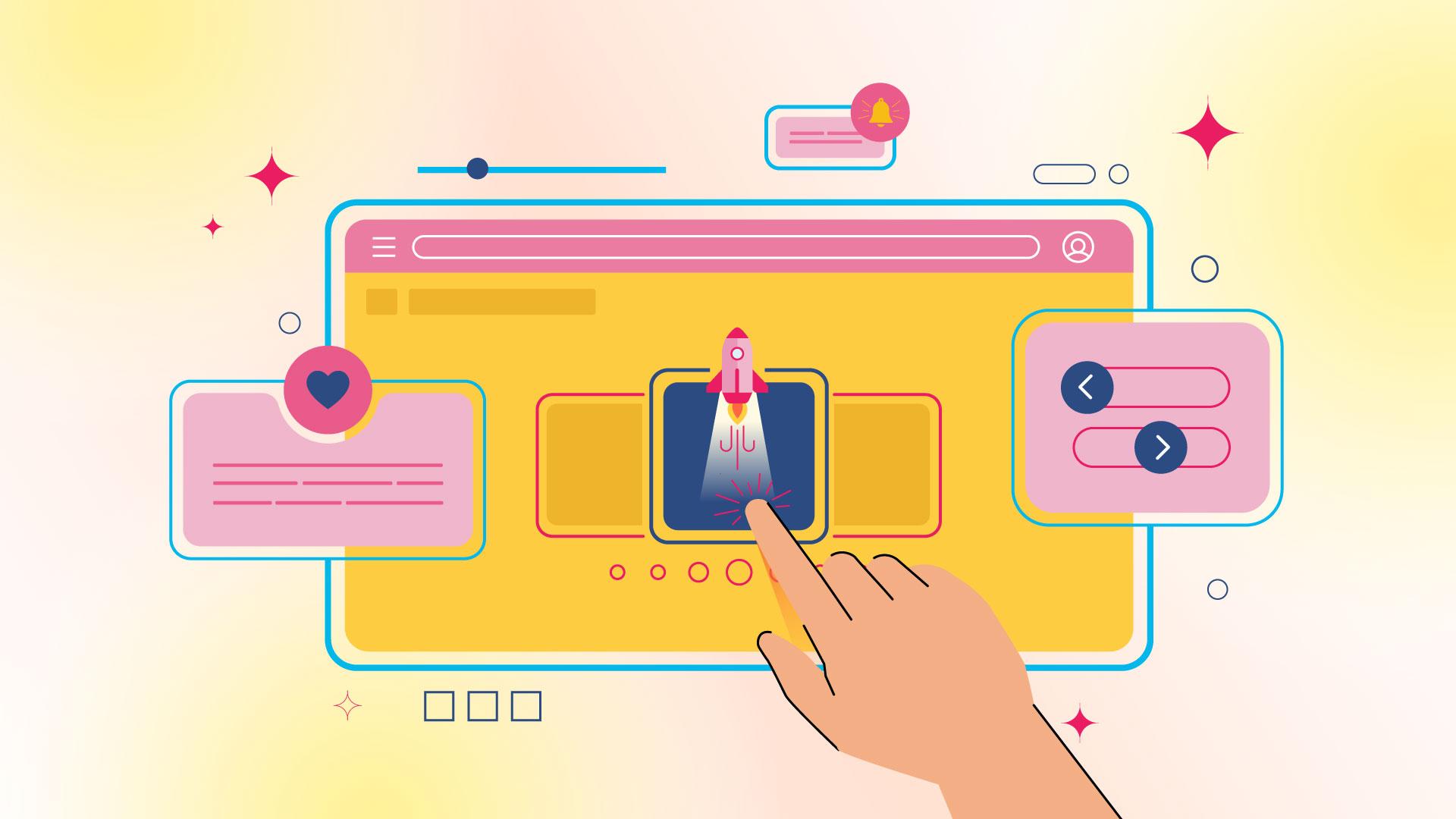
The Future of UX: Embracing the Impact of Micro Interactions
In an era where digital experiences dominate our daily interactions, the significance of micro interactions has never been more pronounced. These subtle yet powerful elements play a crucial role in shaping user engagement and satisfaction. When integrated thoughtfully, they can transform mundane tasks into delightful experiences that resonate with users on a personal level.
Micro interactions are the heartbeat of user experience. They are the small moments that elevate an interface, providing feedback, guiding users, and enhancing emotional connections. Consider the satisfying animation of a button when clicked, or the gentle vibration of a mobile device notifying a user of a new message. These details may seem trivial, but they contribute to a seamless and intuitive user journey.
To harness the potential of micro interactions, designers should focus on three key principles:
- Feedback: Immediate responses to user actions confirm that their input has been acknowledged.
- Consistency: Maintaining a uniform style and behavior across interactions fosters familiarity and trust.
- Delight: Adding unexpected, joyful surprises can enhance user engagement and loyalty.
Embracing the impact of these principles not only improves usability but also creates a memorable brand experience. Users are more likely to return to a platform that makes them feel valued and understood. For instance, a simple loading animation can convey that a process is underway, reducing frustration and setting the stage for a positive outcome.
| Micro Interaction | Purpose | Example |
|---|---|---|
| Button Animation | Feedback | Button slightly enlarges on hover |
| Notification Pop-up | Alert | Message received alert |
| Loading Spinner | Indication | Spinner while data is being fetched |
Moreover, as we move towards a more interconnected world where IoT devices are becoming commonplace, the role of micro interactions will only expand. Designers must adapt and innovate, ensuring these interactions are not just functional but also engaging across various platforms and devices. The future of UX lies in the ability to anticipate user needs and to provide interactions that feel organic and intuitive.
Ultimately, investing in micro interactions is investing in the overall user experience. The small tweaks can yield significant results, driving user retention and fostering brand loyalty. As we continue to innovate and refine our designs, let us remember that every detail counts, and every interaction holds the potential to make a lasting impression.

Inspirational Case Studies: Brands That Excel in Micro Interaction Design
Discover Brands Leading the Way in Micro Interaction Design
In the realm of user experience, even the smallest details can have a profound impact on user engagement and satisfaction. Brands that excel in micro interaction design understand this principle and leverage it to create memorable interactions that resonate with their audiences.
Airbnb has mastered the art of micro interactions with its booking process. The platform uses subtle animations and feedback to guide users through each step, reassuring them that their actions are recognized. For instance, when a booking is confirmed, a delightful animation showcases confetti falling, adding a celebratory feel to the experience. This not only enhances user satisfaction but also fosters a sense of community and excitement.
Another brand making waves in this space is Slack. The messaging platform incorporates playful sound effects and visual cues to enrich user interactions. When a new message arrives, users hear a soft notification sound, accompanied by a quick animation that highlights the incoming message. This thoughtful design choice keeps users engaged and aware of important communications without being overwhelming.
Duolingo, the language-learning app, employs micro interactions to motivate users. Each time a user completes a lesson, they are greeted with a cheerful animation and a celebratory message, like “Great job!” This reinforcement not only makes learning enjoyable but encourages users to return consistently, turning education into a delightful habit.
| Brand | Micro Interaction Feature | Impact on Users |
|---|---|---|
| Airbnb | Confetti Animation on Booking | Enhances excitement and satisfaction |
| Slack | Sound Notifications for New Messages | Keeps users engaged and informed |
| Duolingo | Celebratory Animations for Lesson Completion | Motivates and encourages ongoing learning |
Brands like Spotify take micro interactions a step further by personalizing user experiences. With features like custom playlists and dynamic album covers that shift as you navigate, Spotify creates an environment where users feel a personal connection. These small, thoughtful details transform a standard music-streaming experience into a rich and engaging journey.
Ultimately, the case studies of these brands illustrate how effective micro interaction design can elevate user experience to new heights. By focusing on the nuances of user engagement, these companies not only enhance functionality but also foster loyalty and emotional connections with their users. In a competitive landscape, it’s clear that getting the small details right can lead to significant impacts.
Frequently Asked Questions (FAQ)
Q&A: Mastering Micro Interactions: The Small UX Tweaks That Can Make a Big Difference
Q1: What are micro interactions and why are they important in UX design?
A: Micro interactions are the subtle, small moments of interaction that occur within a user interface. They include actions like hovering over a button, receiving feedback after submitting a form, or a notification popping up. These tiny details might seem insignificant, but they play a crucial role in enhancing the user experience. When done right, micro interactions communicate functionality, provide feedback, and create emotional connections, ultimately leading to a more intuitive and enjoyable user experience. Mastering them can transform an average design into an extraordinary one.
Q2: How can micro interactions influence user behavior?
A: Micro interactions have the power to guide users and influence their behavior in profound ways. By providing instant feedback, they help users understand the results of their actions, reducing uncertainty and confusion. For instance, a simple animation that indicates a loading process can keep users engaged instead of leaving them in suspense. These small nudges encourage users to explore, interact, and return to your application, fostering loyalty and enhancing user satisfaction.
Q3: Can you provide examples of effective micro interactions?
A: Absolutely! One classic example is the “like” button on social media platforms. When users press the button, the immediate visual feedback—such as a heart animation—reinforces their action. Another example is the subtle shake of an input field when a user makes an error, signaling that something needs attention. These interactions are not just functional; they add personality and depth to the user experience, making applications feel alive and responsive.
Q4: What are some tips for designers looking to improve their micro interactions?
A: Here are a few impactful tips:
- Focus on Feedback: Always provide immediate feedback for user actions, whether it’s a color change, animation, or sound. This reassures users that their actions have been registered.
- Keep It Subtle: The best micro interactions are often understated. Aim for a balance where they enhance the experience without overwhelming the user.
- Be Consistent: Maintain a consistent style and behavior across all micro interactions. This builds familiarity and trust, making your design feel cohesive.
- Test and Iterate: User testing is invaluable. Gather feedback on your micro interactions and refine them based on real user experiences.
Q5: How can businesses benefit from investing in micro interactions?
A: Investing in micro interactions can significantly boost user engagement, satisfaction, and ultimately, conversion rates. A polished, well-crafted UX that incorporates thoughtful micro interactions can differentiate your brand in a crowded market. It shows users that you value their experience, fostering a sense of loyalty and trust. In today’s competitive landscape, these nuances can be the difference between a user choosing your product over a competitor’s.
Q6: What final thoughts can you share about the power of micro interactions?
A: Micro interactions are the unsung heroes of UX design. They are the tiny details that create meaningful experiences and can turn a mundane task into a delightful one. By mastering these small interactions, designers can elevate their work and create products that not only meet user needs but also resonate on an emotional level. Embrace the power of micro interactions—your users will thank you for it!
Key Takeaways
In a world where first impressions matter more than ever, mastering micro interactions can be your secret weapon in creating a memorable user experience. These subtle, often overlooked elements have the power to transform a simple task into a delightful interaction, leaving users not just satisfied, but genuinely engaged. As you embark on your journey to refine these small yet impactful tweaks, remember that every detail counts.
Embrace the art of micro interactions as an opportunity to connect with your audience on a deeper level. By investing time and creativity into these nuances, you are not just enhancing usability; you are crafting a narrative that resonates with users and fosters loyalty. So, take that leap—experiment, iterate, and watch as your design evolves into something extraordinary.
The difference lies in the details, and with every micro interaction you master, you are one step closer to creating a user experience that stands out in a crowded digital landscape. Let your passion for design shine through, and inspire others to appreciate the beauty of these small, yet powerful, moments. The future of UX is in your hands, and it starts with the little things. Embrace them, and watch as they pave the way for big transformations.

